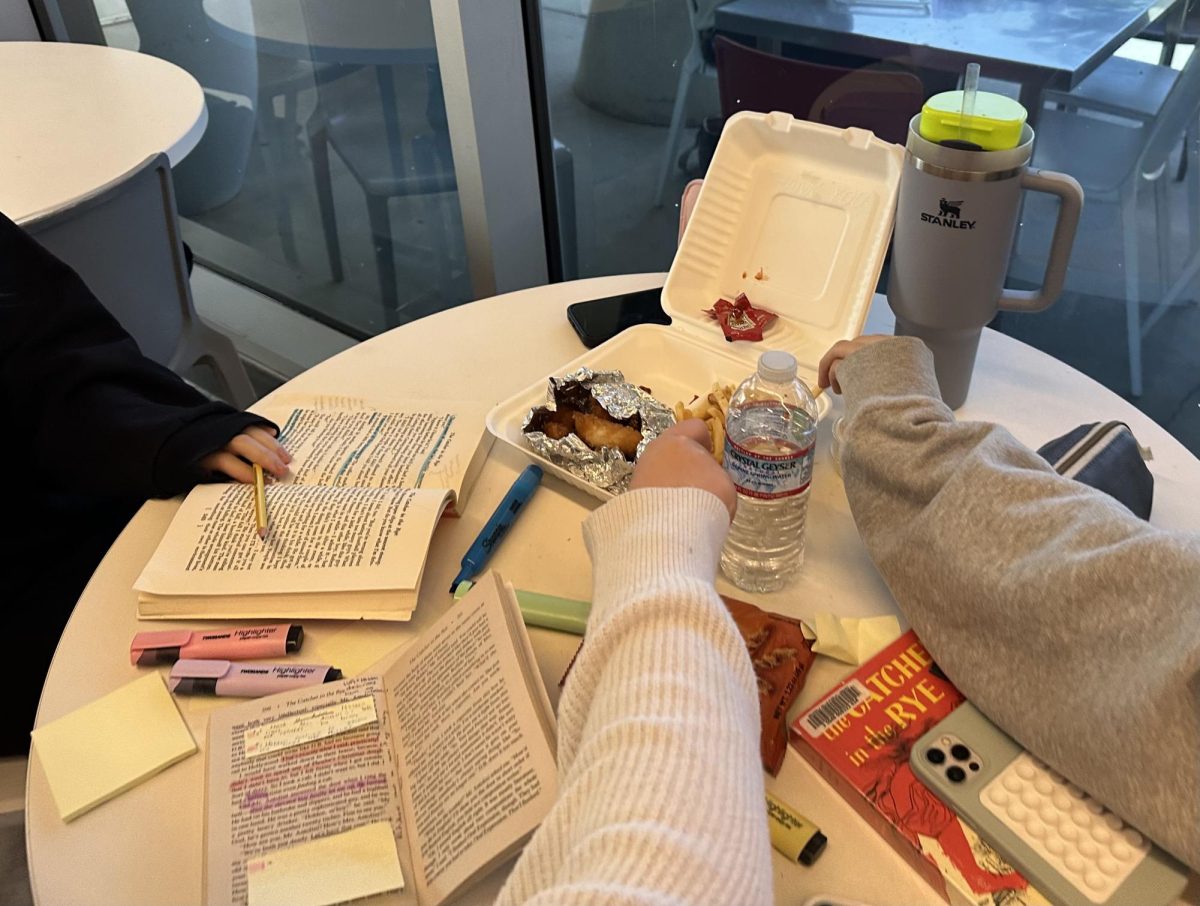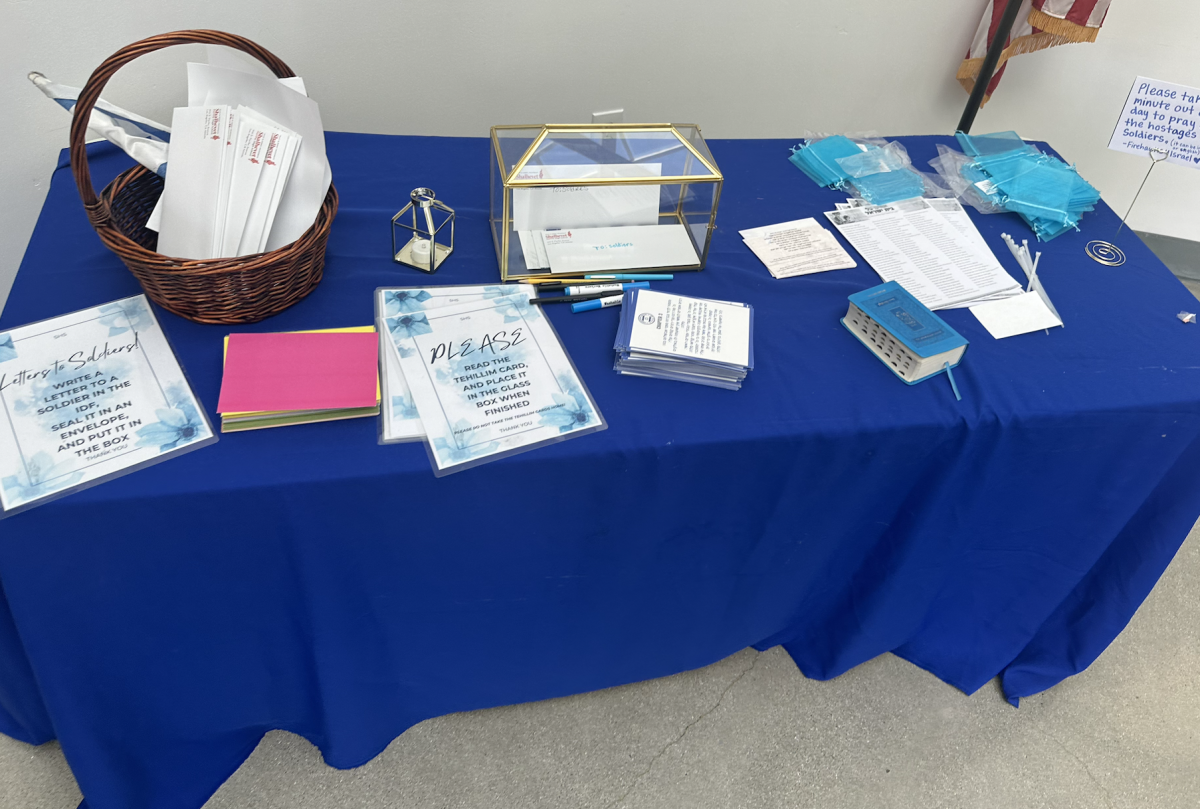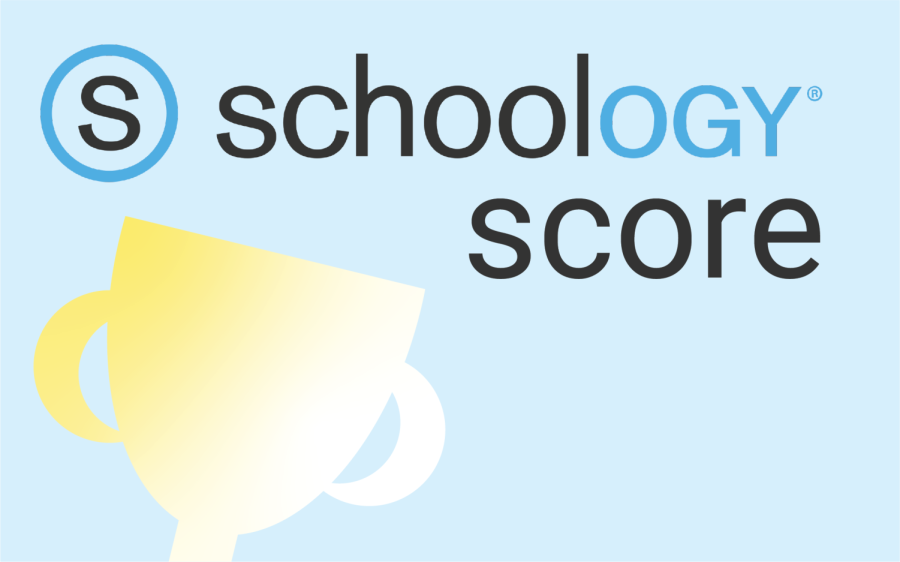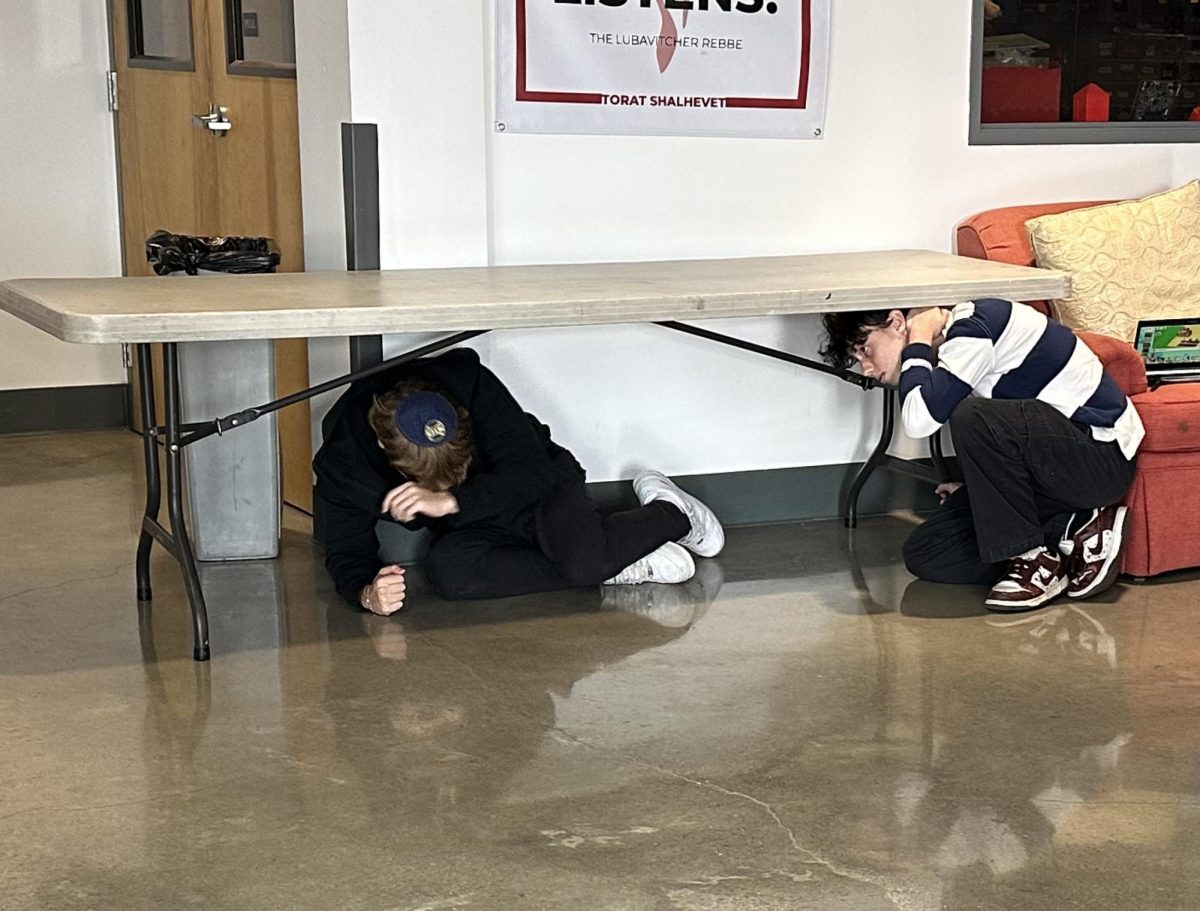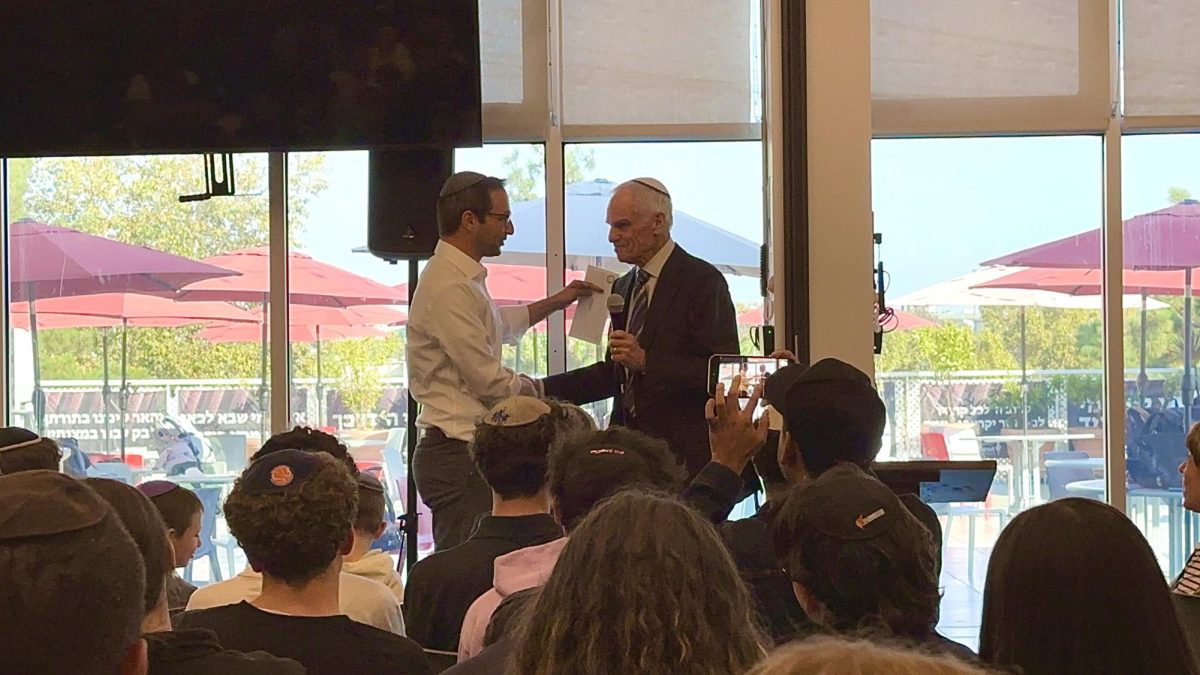A sizable proportion of Shalhevet students arrive at school without a plan for lunch some days, and nearly a quarter do so at least twice a week, according to a new Boiling Point poll.
In a March survey conducted via Google Forms, 46.3% of respondents said that they didn’t eat lunch every day. Of that number, 24.3% skip lunch two to four times a week, and 9.8% said that their most frequent option for lunch was eating from a friend’s meal.
Most cited their own laziness as their reason for not bringing a lunch from home, and price as the reason for not purchasing a school lunch. Others said that they didn’t eat lunch because homework and meetings with teachers didn’t leave enough time.
“I am way too lazy to make lunch, and not wealthy enough to pay for school lunch,” sophomore Zachary Schechter wrote in his response to the poll, which was anonymous but offered students the option of sharing their names.
Senior Rachel Blumofe, who packs lunch for herself, said she understood why others did not.
“Sometimes it’s really annoying to bring a lunch, and people don’t want to pay for it so they just skip,” Rachel said.
Overall, almost 10% of poll respondents said that their most frequent lunch option was their friends’ food – only 2% less than the number of students who reported ordering hot lunch.
Many of the students who don’t bring or buy lunch said they don’t eat at all. However, more than half said they eat either their friends’ lunches, or alternatively, eat snacks purchased from the Student Store or provided by school events or individual teachers.
“Considering I could just eat from my friends’ lunch,” said sophomore Hannah Carr, “hot lunch is a waste of money.”
Sophomore Abby Stone felt similarly to Hannah.
“I never bring a lunch to school,” Abby said. “My friends share with me.”
The strategy also works for freshman Ari Eisen, who said she most frequently eats other people’s “extras.”
“Because they usually have extras and I’m not hungry for a full meal,” Ari said. She also sometimes buys snacks from the Student Store.
Other students don’t eat simply because they don’t get hungry. Daniel Lainer, 10th grade, tried out the hot lunch during his first week at school, but found that he wasn’t hungry enough to make the cost worthwhile.
“I never eat lunch,” Daniel said.
Daniel’s mom, Ms. Lisa Lainer, doesn’t pack or order him lunch for school.
“He’s not consistently hungry enough,” said Ms. Lainer. She doesn’t pack him a lunch, saying that “he’s capable of packing his own lunch if he wants it.”
And the students who do bring lunch don’t always eat it. Ms. Ellen Wintner, mother of freshman Yishai Wintner, said Yishai packs his own lunch and brings most of it home.
“He often won’t eat [his lunch,]” said Ms.Wintner. “Often the snacks will be gone, but the actual meal will be there.”
She didn’t know what he ate instead.
Yishai said on days when he doesn’t eat lunch, it’s because he doesn’t have an appetite. Additionally, snacking is more convenient.
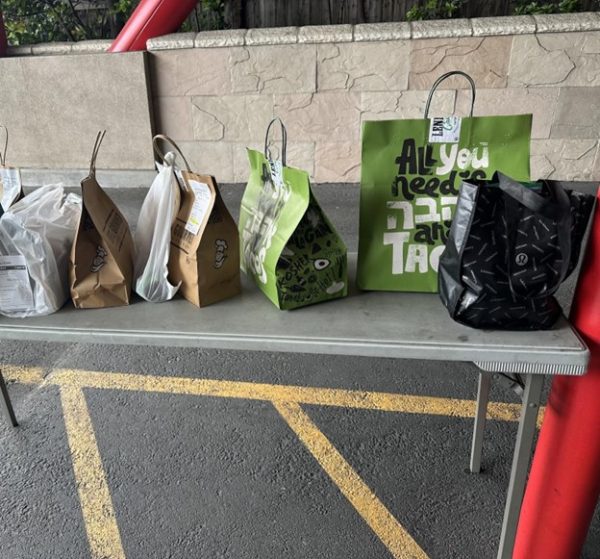
“I’m more likely to eat snacks in the middle of the day because they’re quick,” Yishai said.
Some who do get hungry feel that though hot lunch would be a simple solution to their lunch problem, it’s not feasible because of the cost, which ranges from $10.50 to $15.50 per meal. Others object to the taste of the food, or feel that it is not nutritious or healthy. A number of students don’t eat because they are too busy.
Ms. Muriel Ohana, Assistant to the Head of School and the person who oversees school lunches, said that the school does not earn money on the hot lunch program. She also said Shalhevet tries to order from the least expensive restaurants that still serve what she considers “quality” food.
The prices for a meal from Burger Bar, the most popular school offering, range from $12 for a Large Vegetable Chicken Soup to $15.50 for all the other orders, which include a Hamburger with Fries and Crispy Chicken Sandwich with Fries. Glatt Mart sushi, the least popular, has prices ranging from $10.50 for a Vegetable Roll to $14 for a Caterpillar Roll.
“It is very expensive,” wrote one poll respondent about the hot lunch.
“I don’t want to spend an absurd amount of money buying lunch,” wrote another.
The total for four days of school lunch straight ranges from roughly $40 to roughly $60. Over the course of a full month, that would be $120-$240, or approximately $1,000-$2,000 per academic year.
Rabbi Eli Broner, 9th Grade Dean, described this as “prohibitively expensive.” He suggested having a student elective group use the school kitchen to make lunch on campus.
Still, Ms. Ohana said the current restaurant lunch system is less expensive than other options such as having lunch made in the school kitchen. She said that school officials tried that “years ago,” but that it had been unpopular and financially unsustainable.
“It’s more cost-efficient for the kids and for us,” Ms. Ohana said of the current system.
Other students say they skip lunch because they are too busy meeting with teachers or doing schoolwork.
While price was the issue most commonly cited by those who don’t get hot lunch, taste and health were mentioned as well.
“I stopped getting it because it’s not the healthiest,” said sophomore Ari Ben-Naim in an interview. Mostly, he objected to the MSG in some of the lunches.
Some of the students who object the school lunch for reasons other than price order lunch from restaurants not included in Shalhevet’s lunch plan, and have them delivered via DoorDash. Though it wasn’t counted in the poll, most days at least 10 deliveries from Postmates or DoorDash are dropped off at the school security booth, where a table has been set up to receive them. Among the most popular restaurants ordered from are Lenny’s Casita, Meshuga4Sushi and Jeff’s Gourmet.
Skipping lunch isn’t healthy either, studies have shown, and can lead to health problems and difficulty concentrating on school. According to the U.S. Center for Disease Control (CDC), not eating enough is linked to lower grades, more absenteeism, and needing to repeat a grade.
In public schools, the federal government subsidizes lunches for students. There are also nonprofits, such as the Chef Ann Foundation, devoted to making sure elementary and high school students have a nutritious lunch every day.
“Healthy school food is not only a solution for nutrition and health concerns, but social, academic, and environmental issues as well,” states the Chef Ann Foundation on its website.
Sometimes, Shalhevet students struggle to eat lunch because they are occupied with school-sponsored activities such as club meetings. Additionally, some teachers occasionally teach classes during lunch, and at least one teacher does so every week.
Other teachers help provide food for hungry students. Morah Ortal Klyman, Rabbi Eli Broner, and Ms. Malka Popper keep snacks in their offices, at least partly with hungry lunch-hunters in mind. They report a steady stream of visitors.
Students also can purchase soups and snacks from the student store, although many complain about prices there as well. For instance, a cup of Gefen noodle soup, a favorite with students for lunch, costs $4 there, compared to $1.56 at Walmart and $1.79 at Target. A can of Coke, which is $2 at Ralphs and as little as 75 cents in some places, costs $2.75 at the Student Store.
Rabbi Broner, who has kept snacks in his basement office since first arriving at Shalhevet last year, described it as part of his role as a dean and student mentor.
“I felt that it was a way of connecting with my students, giving them a reason to stop into my office, grab a snack, and do a little check-in at the same time,” Rabbi Broner said.
Five to eight students a day come while he is in his office, and more while he is elsewhere in the building – he leaves his room unlocked, and restocks once a month. While he mostly fills his office with snacks and candy, he also keeps protein bars and other filling foods.
He said that both types of food disappeared at nearly equal rates.
School administration, meanwhile, does not plan to step in. Ms. Emerson said that neither she nor the school was aware that many students are not eating lunch, but now that she had been informed she felt that it was not something the school should get involved in.
“It’s healthy to eat lunch, but students in highschool make their own decisions with their families and their parents,” Ms. Emerson said.
“We’re going to trust that they’re making those decisions about what they’re going to eat for lunch and when for their best interests.”

